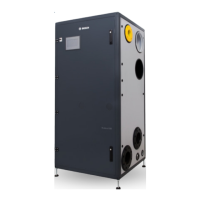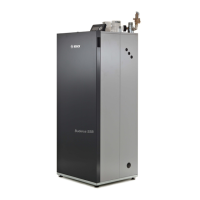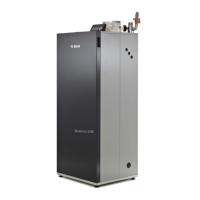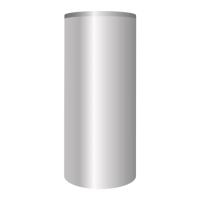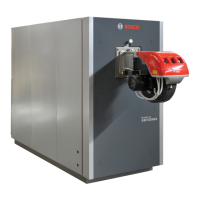6720892984 (2019/02) US SSB
36 | Main control
Frost protection for boiler cascade
The ‘frost protection’ function for a burner cascade is related to the boiler
sensor temperatures.
When the boiler sensor temperature or the managing burner supply/
return temperature is below:
Cascade frost protection
The cascade CH/system pump and the general pump of the managing
burner start running.
Cascade frost protection – 5°C
Cascade heat demand is activated to open the optional air damper, the
general pumps of all the burners will be started. Demand with setpoint
Cascade frost protection allows the burners to start burning until the
lowest of both boiler, managing supply and return temperatures are
above
Cascade frost protection + 5°
C.
Frost protection on burner
As last protection the controllers for the burners can force themselves to
burn.
NOTE: On systems with an air damper this demand will not be served
when the air damper is closed.
If the burner supply/return temperature drops below 5°C (41°F) the
burner starts at minimum power and continues burning until the lowest of
both supply and return temperatures are above 15°C (59°F).
Frost protection in cascades with air damper
To enable frost protection a demand must be generated on the cascade
controller. This is covered by the frost protection and needed because
the air damper must be opened by the cascade controller before a burner
can start.
5.3.8 Flue temperature protection (Rev 3.0.0.0)
The ue temperature protection function protects against the ue gas
reaching too high temperatures. Either a ue gas sensor or a ue switch
can be used.
• When the
T_Flue
or
T_Flue_2
sensor measure above the
Max_
Flue_Gas_Temp
the control generates a
Flue_Gas_Error
.
• When the Flue_Switch closes the control generates a
Flue_Gas_
Error
.
When the control is in a Flue_Gas_Error the fan will run at the minimum
fan speed.
Burner power limitation
When a ue gas sensor is connected the control will limit the burner
power when the ue gas temperature reaches the set
Max_Flue_Gas_
Temp
. The maximum burner power is linearly limited when the ue gas
temperature is within
Max_Flue_Gas_Temp
– 5°C and
Max_Flue_Gas_Temp
.
Relevant variables
Specic
Parameters
Level
(Default)
Value
Settable
°C °F °C °F
Max_Flue_Gas_
Temp
[°C/°F]
3: Factory 100 212 40...130 104...266
5.3.9 Input conguration 900MN (Rev 4.0.905.16712)
There are several multiple function inputs that can be applied for different
types of appliances. The function of the input can be selected via the
epHS display but also with LabVision PC software.
The following input functions can be selected:
Input Description
J72-3
0 ¨ Disabled
1 ¨ Water pressure sensor
2 ¨ CH ow switch
3 ¨ Flue pressure switch
J72-4
0 ¨ Disabled
1 ¨ T_DCW sensor
2 ¨ Water pressure switch
J77-8
0 ¨ Disabled
1 ¨ DHW ow sensor
2 ¨ DHW ow switch
3 ¨ CH ow switch
J79-10
0 ¨ Disabled
1 ¨ Drain switch
2 ¨ Gas pressure switch
J123-6(*)
0 ¨ T_Supply_2 sensor
1 ¨ Disabled
2 ¨ Air damper switch
J63-10
0 ¨ Disabled
1 ¨ T_Return sensor
2 ¨ Vapor switch
J64-11
0 ¨ Disabled
1 ¨ T_DHW sensor
2 ¨ T_Zone sensor
J65-12
0 ¨ Disabled
1 ¨ T_Fluesensor
2 ¨ Flueswitch
3 ¨ APSswitch
676-13
0 ¨ Disabled
1 ¨ T_Flue_2 sensor
2 ¨ T_Flue_2 with blocked ue
3 ¨ T_System sensor
4 ¨ Blocked ue switch
(*) Duplex safety sensors cannot be adjusted freely.
5.3.10 Output conguration 900MN (Rev 4.0.905.16712)
There are several multiple function outputs that can be applied for
different types of appliances. The function of the output can be selected
via the epHS display but also with LabVision PC software.
The following outputs are available on the control:
Output Connection Type output
Prog. Output 1 J3 3-8 Relay output
Prog. Output 2 J3 5-10 Relay output
Prog. Output 3 J3 6 Relay output
Prog. Output 4 J3 1-2-7 Relay output
Prog. Output 5 J3 4-9 Relay output
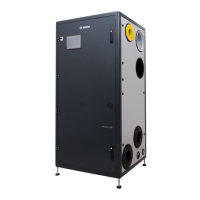
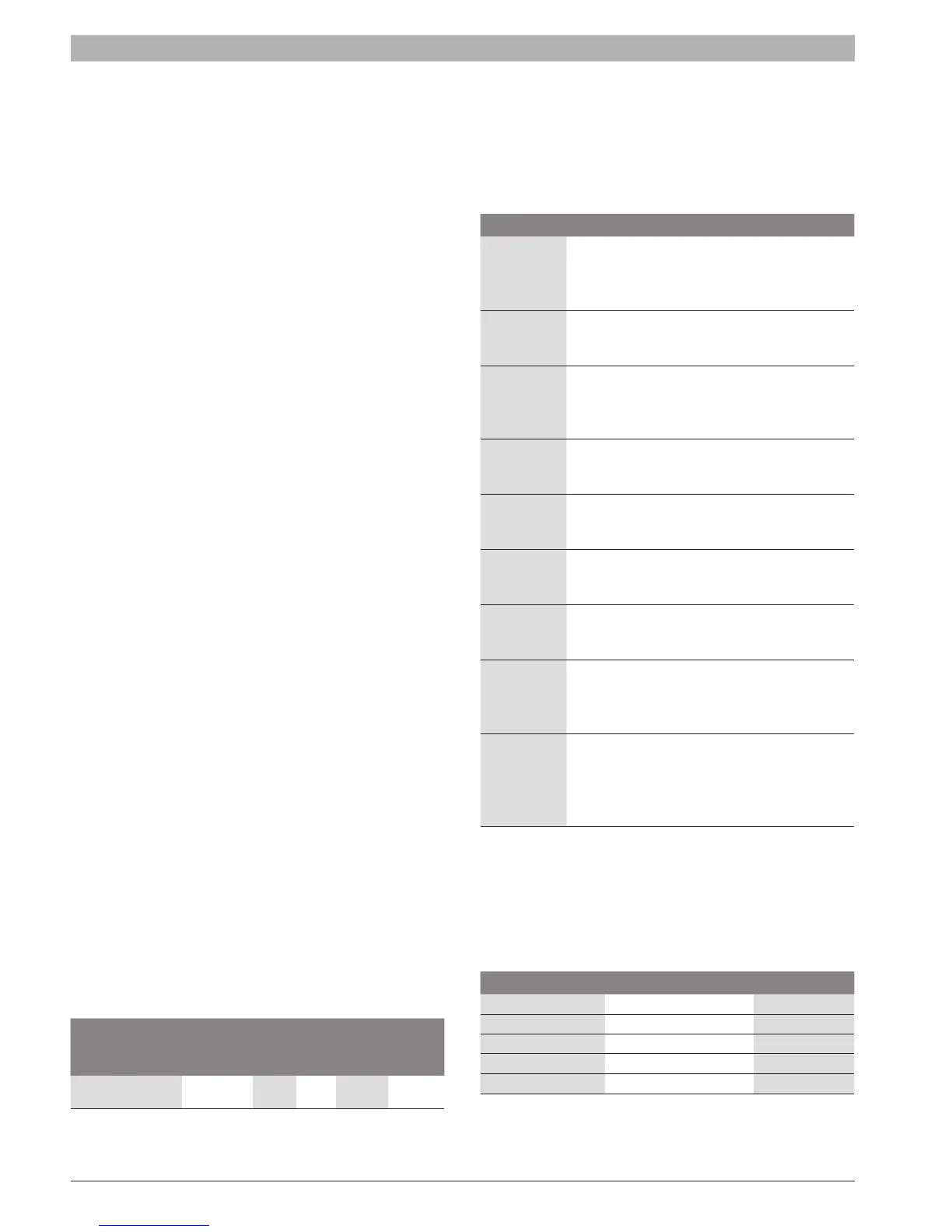